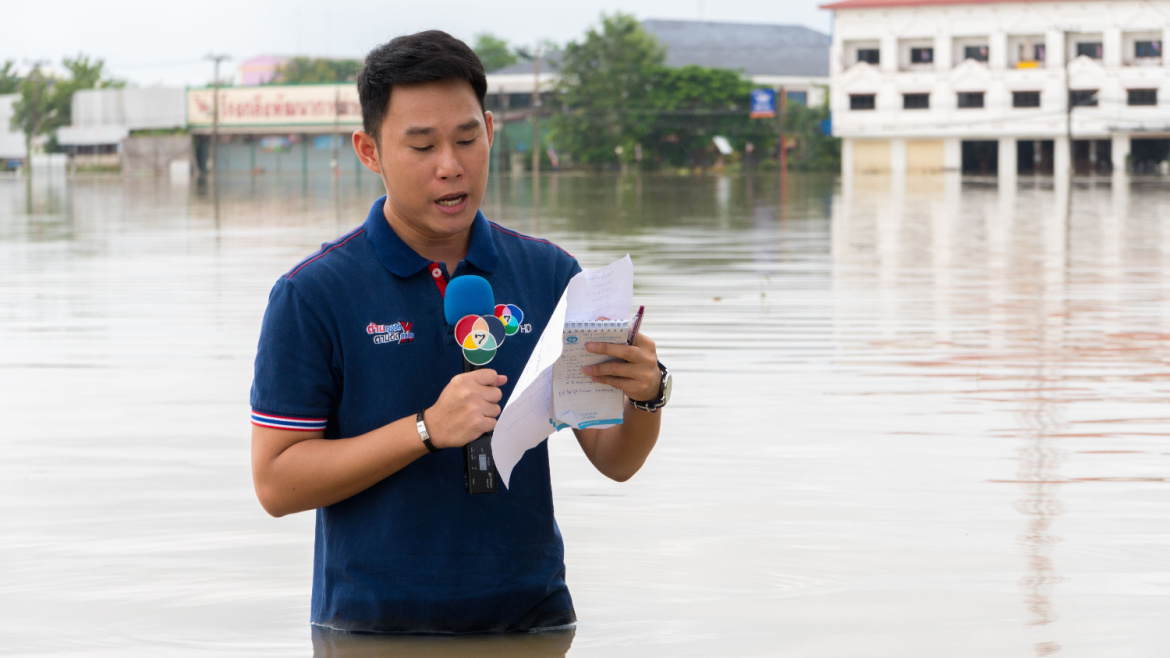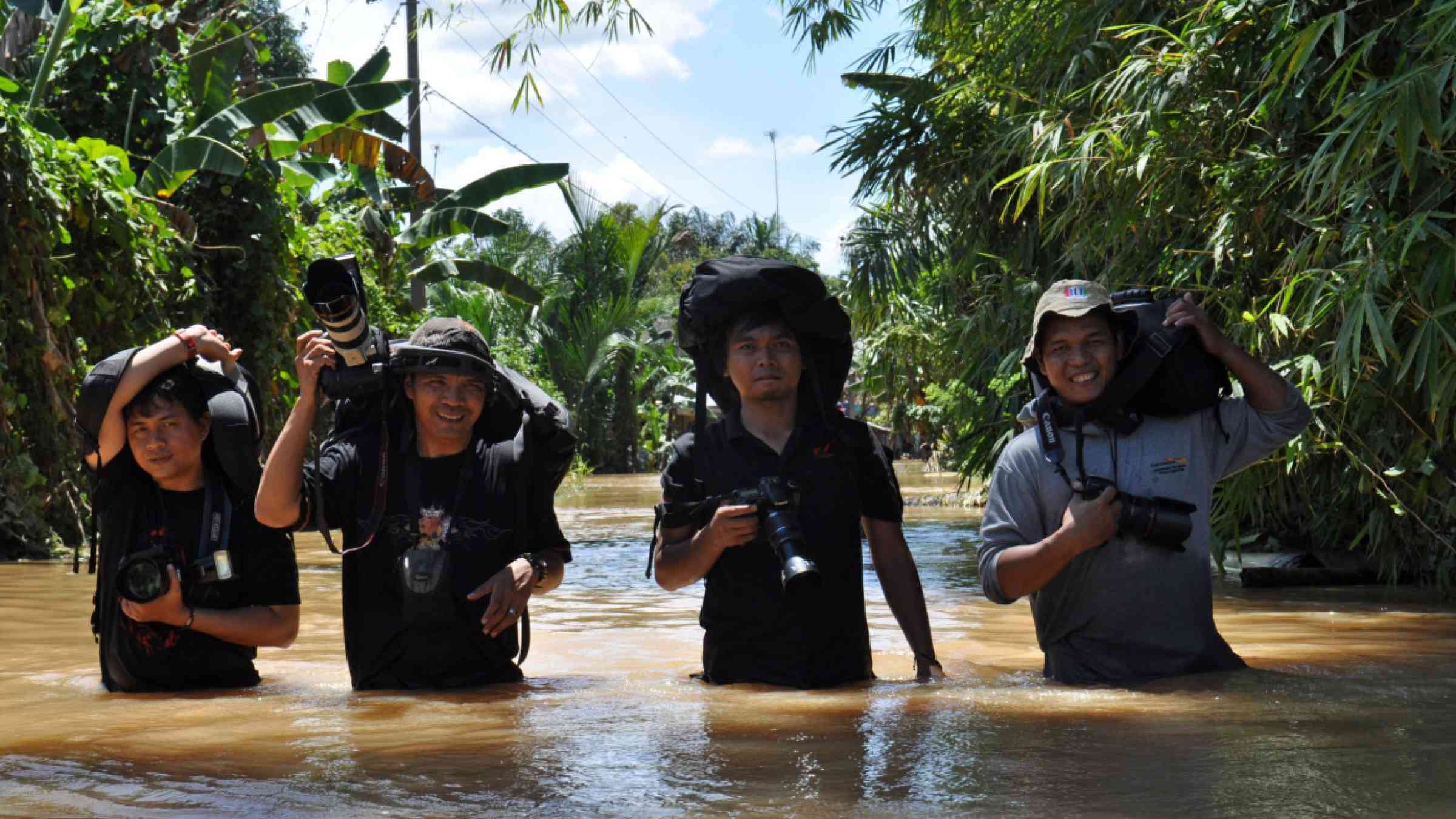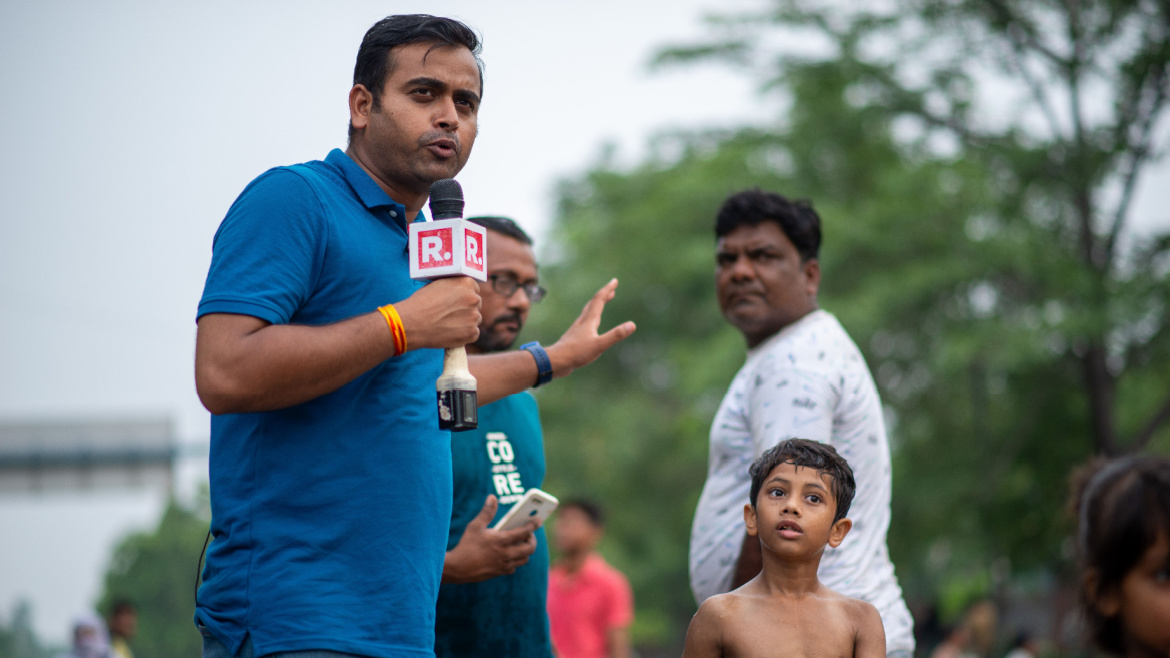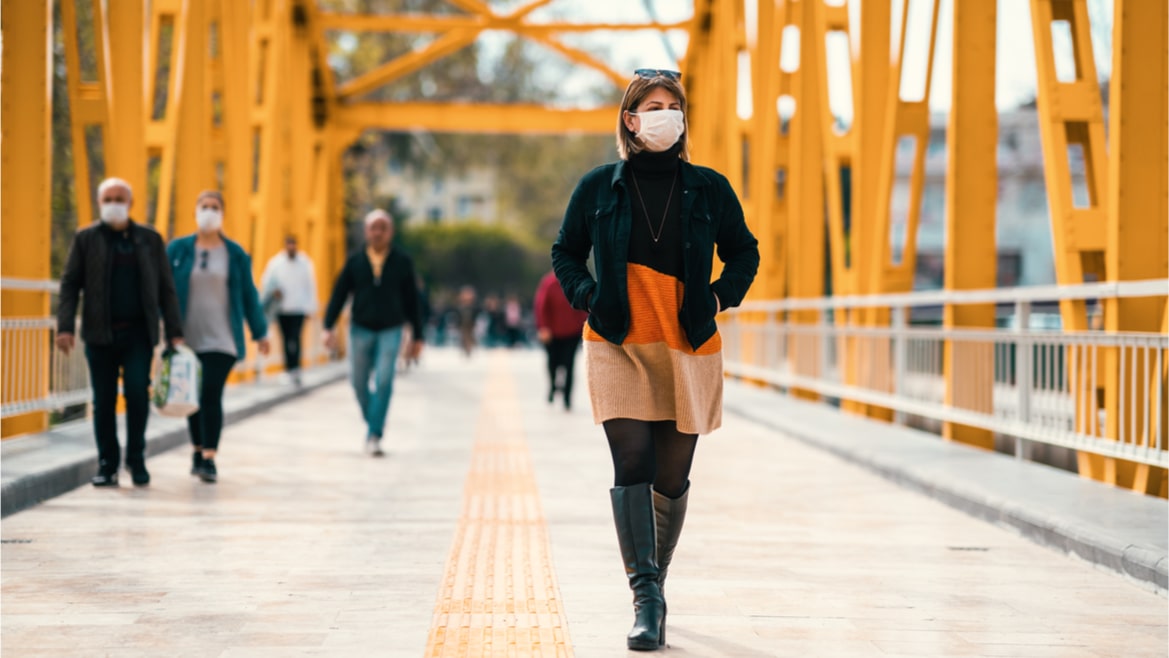Ethics
Ethics
Guidance on navigating ethical issues journalists may face when covering disasters.
As with all reporting, and perhaps more so, coverage of disasters raises several ethical and other issues. Numerous pitfalls lie in wait for those trying to provide credible information or demystify expert knowledge and data.

Recognising the power of media narratives
Media coverage is often selective, not comprehensive, and it creates narratives that gather momentum. These narratives can determine how disasters and various actors in the response to disasters are viewed in the public eye. They also determine who is blamed for failures or appreciated for an effective disaster response.
The 2005 Hurricane Katrina, which hit the US city of New Orleans, and the 9/11 attacks in 2001 represent the power of public perception that arises from media coverage. In the first example, the emerging meta-narrative was about the failure of government. In the second case, the media narrative created a supportive consensus between the people, media and government. Similar examples of dominant narratives abounded in the various national responses to the COVID-19 pandemic.
Media narratives gather momentum because the media is often “self-referential”. Journalists follow the angles used by other journalists even as they compete with each other. Put differently, a topic can gather its own momentum, attracting more and more attention. It is important to recognise this and make attempts to break this loop where appropriate.
The ethics of aiding those in distress
Reporting on war, disasters, and epidemics – and alerting the world to human suffering and need – serves a compelling public interest. On such assignments, journalists inevitably encounter people with urgent needs for shelter, food, or medical attention. Human decency prompts many journalists to offer aid and comfort to people who are suffering, but reporters must not profit from these acts nor exploit those to whom they offer help.
The ethics of dealing with survivors
This is one of the big issues in the coverage of disasters, especially when they are happening and in their immediate aftermath.
In some cases, journalists may find themselves first on the scene, even before the arrival of emergency services. Though their primary job is to get the information out from that location to the wider world, they might be confronted by distressed people whose real needs are medical care, reassurance, food, water and shelter. This is a real dilemma that many disaster journalists face.
Ethical guidelines
- Avoid sensationalising your coverage and spreading panic
- Be sensitive to the trauma and pain of survivors
- Do not pressure people into granting interviews, especially those who are injured or distressed
- Respect the space of affected people – it is not unusual for them to welcome reporters at first but rebuff them as the days go by because of perceived problems in the coverage
- If you face hostility for perceived misreporting by you or other journalists, do not react aggressively; understand the trauma of the affected, connect with them on a human level and do not hesitate to apologies for misreporting where appropriate
- Do not interfere with rescue operations
- Be careful about revealing the names of those who have died – in many countries, names should be revealed in the media only after the relatives of the deceased have been informed
- Avoid amplifying political conflict
- Think hard about how your coverage will affect specific cultural or ethnic groups and ensure you are not adding to their stigmatisation
- Carefully consider the ethics of showing visuals of dead bodies and distressed people
- Deal only in confirmed facts, including when dealing with the estimated number of casualties; verify statistics, especially in the early stages of a disaster; if you can’t verify a figure, say so clearly in your story
- Do not rush to ascribe blame for the situation. Stay neutral in controversies; the blame game can wait
- Avoid victimising those affected by a disaster or portraying them as responsible for their own misfortune
- Carefully verify stories about heroes and villains in a disaster – they can be politically motivated
- Avoid portraying yourself as a hero or part of the drama of the disaster
- Include in your stories information about how those who are not affected by the disaster can assist
- Slow down and be more like a scientist – wait for facts to emerge Don’t pressure sources to provide immediate answers about causes of disasters, which are often complex and only emerge over time
- Attribute the information you use to named sources
- Respect expert knowledge
- Where experts disagree, acknowledge the difference of opinion
- Avoid experts speaking outside their area of expertise, especially when they suggest radical solutions
- Admit your own limitations of knowledge
- Listen to members of your audience and respect their advice about the impact of your coverage.
Public interest versus the public’s right to know
There is an intense desire to know what is happening and how that will affect people’s lives during disasters, but the public’s right to know can come into conflict with the wider interest of those very groups. One such example can be seen in the leak of information about a quarantine plan in northern Italy, which was revealed by a newspaper the day before it was to come into effect. This reporting nullified the quarantine and created far more problems than it solved. Leaks and disclosures on such sensitive matters deserve thorough editorial consideration at the highest levels of the media, and the journalistic imperative to be first with the story should not be the only factor taken into account.
Leaked coronavirus plan to quarantine 16m sparks chaos in Italy
Italy experienced its highest day-on-day rise in deaths from coronavirus on Sunday and was plunged into chaos after details of a plan to quarantine more than 16 million people were leaked to the press, sending thousands into panic as they tried to flee.
Fake news and verifying social media content
Information gathered from social media is invaluable to journalists, but it also presents a number of problems. Content circulating on social media can often include rumours, fear-mongering, one-sided perspectives, misguided solutions, unfounded predictions, false cures, dangerous mythology, decontextualized or recontextualized videos, and perspectives that stigmatise certain social groups.
Journalists across the world use several verification techniques to detect fake news, prevent the spread of misinformation and safeguard their own credibility. These include analysing the social media accounts from where information is originating, reverse image searches, video analysis, and journalistic verification which can be as simple as getting in touch with the individual spreading that information.
Data matters – but it requires hard work and patience
Hard data – verified data – is critical at all stages of covering disasters and promoting resilience. Data is central to taking informed decisions about courses of action. People want to know what is going on, whether it is about risk or impact or preparedness. Graphs and charts in stories put out by the media make for much better impact and audience comprehension.
Data represents reality, but of course there are pitfalls. One is that data may not be complete. Another is that data is presented in the language of experts and journalists have to put in the required work to understand what each indicator or data point represents, as with all the information data that surrounds the COVID-19 pandemic – ranging from the basic reproduction number of an infection (R0) to mortality rates, death rates, excess deaths, recovery rates, types and numbers of tests, and economic impacts.
Science lies behind each element of data and this science differs from disaster to disaster, so journalists must put in the required homework to ensure that they understand what scientists are talking about so that they can be sure not to distort its meaning in their output.
Journalists rightly demand data from authorities, but that data may not exist, or it may be premature to release it. So, it is important to be patient and realistic, and to avoid adopting confrontational positions without being aware of the various reasons why data is not always readily available.

Dealing with complexity and uncertainty
Experts may feel that journalists are oversimplifying their perspectives and not reflecting the complexity of the situation. This is not entirely unfounded. Often there are no clear answers. A complex dilemma requires a careful balance of priorities rather than a clear-cut yes or no. An illustration is provided by the discussions over imposing and lifting lockdowns during the COVID-19 pandemic, with competing imperatives around life and livelihood or wealth and wellbeing.
To deal with the complexity and uncertainty that abound in critical situations such as disasters, it is important to:
- Recognise that real-life situations are complex and there is often no one clear answer
- Understand the logic that lies behind each of the competing priorities, and to acknowledge that they can all be valid
- Emphasise long-term contact with experts as well as development and training of reporters in these areas
- Be wary of one-sided or simplistic solutions to complex problems

